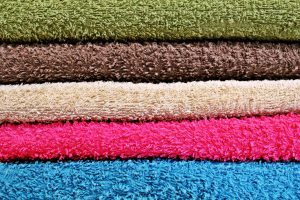A new viral disease surveillance tool: Indoor dust as a matrix for surveillance of COVID-19, published in mSystems. Throughout the COVID-19 pandemic, large scale monitoring of SARS-CoV-2 has helped to prevent spread and inform public health decisions. This has largely been done through individual sampling (ie nasal and saliva sample collection) and through environmental surveillance …
We are pleased to announce the publication of our manuscript titled “Modeling microbial growth in carpet dust exposed to diurnal variations in relative humidity using the “Time-of-Wetness” framework” in the journal Indoor Air. This work is a culmination of research investigating how changes in relative humidity impact microbial growth in carpet dust. Our related study …
Carpets are a favored flooring type. They can be soft, cozy, and warm – and help with keeping noise levels down. Carpet can even help prevent injury. While these attributes are well recognized, what is less known is how carpet compares with other flooring types in affecting your indoor environmental exposures. To help address this …
